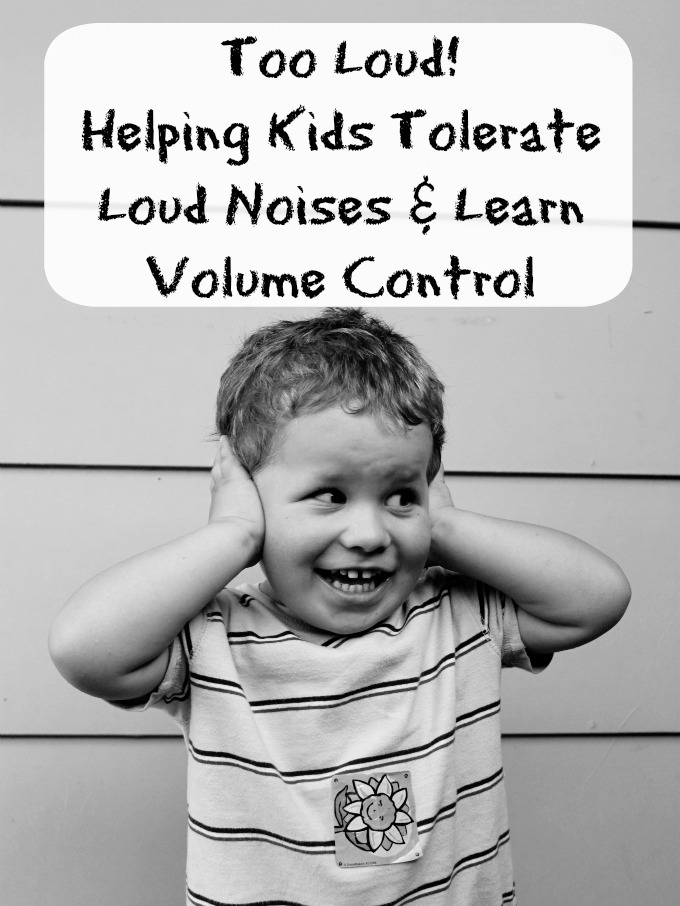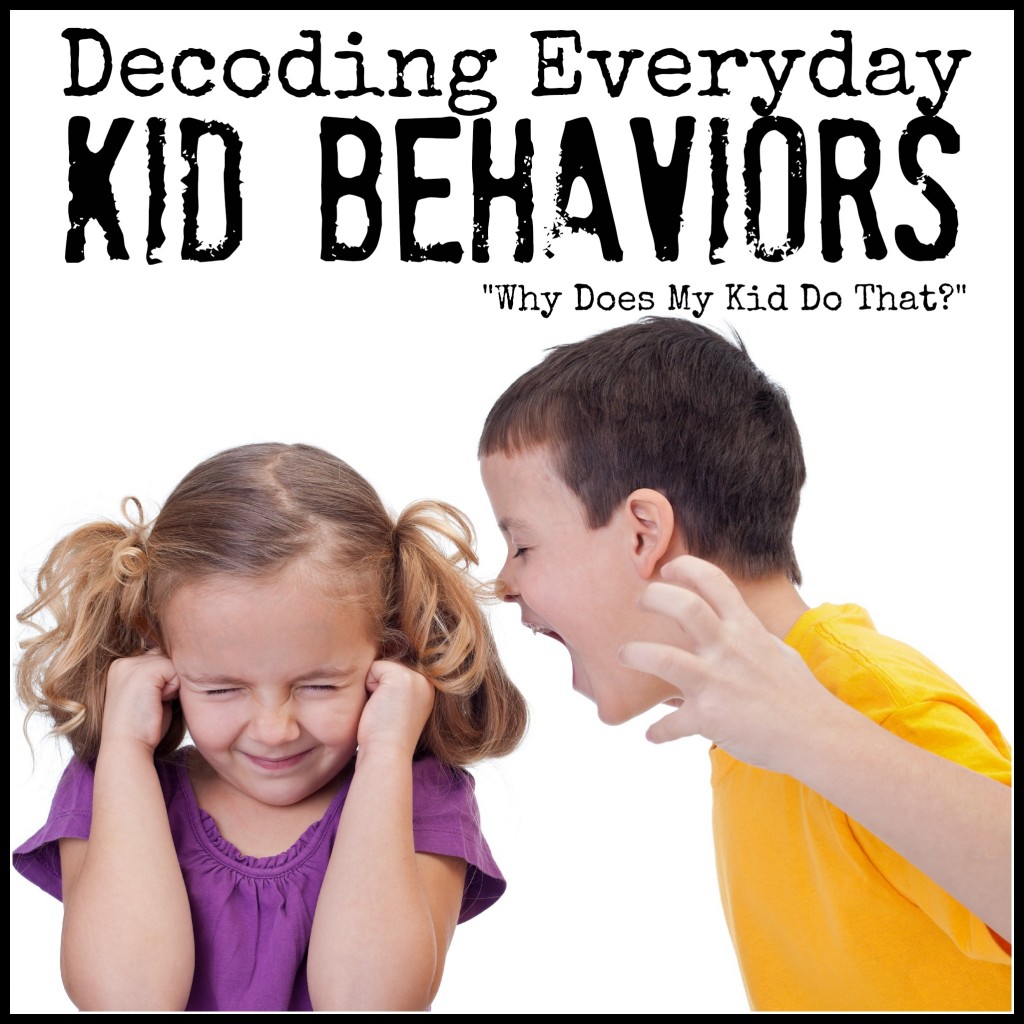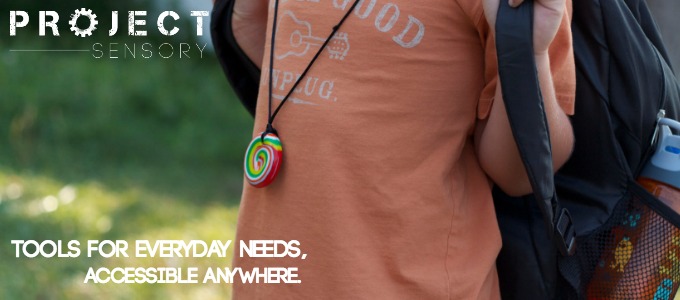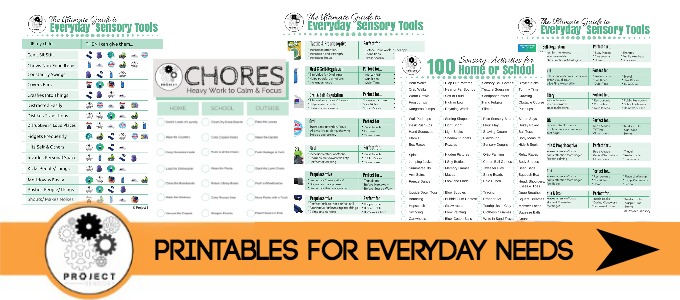 Too loud! Too loud, Mommy! This phrase is often heard in our home and accompanied by yelling, crying, and hands held over ears. The same child often loves to create a noise level much higher than the one that bothered him by yelling, banging, and testing the range of his voice. What I’ve learned recently is this behavior is linked to his auditory sensory needs, and I can help him adjust and get those needs met. If your child has behaviors you long to understand, I urge to join in during Sensory Awareness Month as the #ProjectSensory team of bloggers shares posts about Decoding Everyday Kid Behaviors. Every child has sensory needs, and you can help them meet those needs with simple solutions.
Too loud! Too loud, Mommy! This phrase is often heard in our home and accompanied by yelling, crying, and hands held over ears. The same child often loves to create a noise level much higher than the one that bothered him by yelling, banging, and testing the range of his voice. What I’ve learned recently is this behavior is linked to his auditory sensory needs, and I can help him adjust and get those needs met. If your child has behaviors you long to understand, I urge to join in during Sensory Awareness Month as the #ProjectSensory team of bloggers shares posts about Decoding Everyday Kid Behaviors. Every child has sensory needs, and you can help them meet those needs with simple solutions.
I’m no expert, just a mama trying to figure out how to meet the needs of her children. If your child fears loud noises, creates them way too much, or both (like mine) there are ways to help. If ear covering, overreacting, yelling, or fear of loud noises are the norm in your house, I feel your pain. Here are a few ideas we are trying:
1) Warn the child before something loud or abrasive happens and create a system for regular occurances. I make sneaky veggie smoothies for the kids several times a week. The blender makes the Bear LOSE IT. We’ve worked out a system where he watches me load the blender and then gets to a comfortable distance, covers his ears, and gives me a thumbs up. When he is ready, I turn on the blender. I do it in short bursts to help him better tolerate it. Each time we repeat the thumbs up process to make sure he is ready. This quick solution has made a HUGE difference in how our mornings go.
2) Create space for quiet, for loud noise, or both. If Bear is wanting to make noise, we turn on music and get out our instruments. He bangs the drum while the Pearl Girl and I play the shaky eggs. He has the freedom to be as loud as he wants without getting shushed. Giving him this space to make noise helps him to be more in control the rest of the time. We also set aside quiet time for a break from sound with reading and quiet activities. Head phones, ear plugs, soothing music, and noise machines can also be very helpful for many kids. I’ve found that turning on a soothing Pandora station can change the mood for our whole house.
3) Practice listening skills. Right now we are working on following sets of 3 directions. I will ask Bear to do 3 simple tasks and repeat them to me. He checks them off out loud as he does them and we are both less frustrated. This is really helping me (maybe more than him). His listening skills are improving and my frustration is lessening.
To learn more about the auditory system, read this post from Lemon Lime Adventures. Dayna is a veteran teacher and mama of 3 on a mission to help parents, caregivers, and teachers meet the sensory needs of every child. She created Project Sensory to help get resources and tools to parents and caregivers of children with Sensory Processing Disorder as well any parent or caregiver who wants to help meet their child’s sensory needs and succeed at home and at school.
The Sensory Fix Toolkit she created has amazing tools to help you help your child. A handpicked kit filled to the brim with over 15 tools to help your child organize their sensory systems today, it also comes with a 1 year membership to Project Sensory’s exclusive printables club. Sensory Fix™ Toolkits are on PRE-ORDER until December 1 (when the pre-order discount will end). If you were to purchase the kit in stores or online seperately, it would cost over $200. Order now and get it at a 35% discount, including free printables for a year. Project Sensory will donate 1 Sensory Fix™ Kit to classrooms in need for every 20 kits purchased. There is FREE SHIPPING on all orders over $75.
Every purchase from Project Sensory will help to donate Sensory Fix Toolkits to classrooms through Project Sensory “The Project”. If you are a teacher interested in finding out more, visit the Teacher Page to Apply for Classroom Sensory Fix™.
During Sensory Processing Awareness Month this October, Project Sensory has a FREE Printable Challenge/ 100 Sensory Activities for Home or School. There are also 15+ giveaway happening on Project Sensory this month. Don’t miss out!

What every day kid behavior are you trying to decode? Stay tuned for the rest of the series by following the #SensoryFix hash tag and visiting the main page here.




Great post! My son is also put off by loud noises, but isn’t afraid to make loud noises! I’ve noticed its all about control. Like your son, my son can handle loud noises if he is prepared for them. 🙂
Thank you so much for being part of this. You really did a great job. This is such a great post that will help lots of parents!
For my son it’s rarely the volume, it’s the origin. If it’s mechanical (including instruments), he’s fine with lots of it at nearly whatever volume. If it’s people or animals (one annoying person who has a lot to say, or a crowd of people chattering), be prepared for a meltdown including demands for quiet with hands over the ears. We came home from the state fair this year and immediately bought him some noise cancelling headphones. It was unexpectedly horrible.
That is so interesting that one bothers him while the other doesn’t. We get lots of hands over the ears in crowds, too. I’ve heard great things about the noise cancelling headphones.
Can it be other side of the spectra – kids who can’t seam to live without noises surrounding them ALL THE TIME? And vast mayority they create themselves?
I often say that my dd has no volume control. I just chalked it up to genetics. My family has lots of loud talkers. But, I’m going to try to give her some opportunities to make noise. Thank you.
These are great suggestions for when they are young enough to be at home most of the time. I’m looking for tools and tricks I can use to help my 9-year-old at school, when the noise becomes unbearable for him and he reacts by yelling at the class. 🙁 He won’t wear headphones out of embarrassment. He wore ear plugs for a while, but now is shying away from them too.